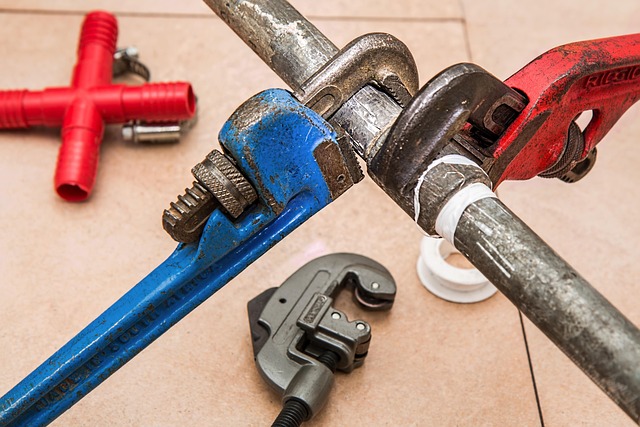Leak detection is crucial for industries like manufacturing, energy, and water treatment, preventing financial losses, ecological damage, and safety risks. Traditional methods are inefficient and limited, whereas modern leak detection systems leverage IoT, machine learning, smart sensors, and real-time monitoring to enhance proactive maintenance. These technologies minimize repair costs, reduce water wastage, improve network efficiency, and optimize infrastructure management. Case studies demonstrate significant successes in various industries, with green technologies further promoting sustainability by reducing carbon footprints. The future of leak detection is driven by AI and IoT, promising smarter, more efficient systems that predict and detect leaks proactively, aligning with global efforts for sustainable water management. Choosing the right leak detection solution requires understanding specific needs, system types, operational demands, budget constraints, and environmental factors.
“In today’s world, swift and effective leak detection is paramount across various sectors. Leaks, often unseen and unheard, can cause significant damage—financially, environmentally, and operationally. This article delves into the critical need for fast leak detection solutions, exploring traditional methods and their limitations. We spotlight advanced technologies like real-time monitoring systems and smart sensors that offer unprecedented precision. Furthermore, we discuss case studies, environmental considerations, future trends driven by AI and IoT, and essential factors to consider when choosing a leak detection solution tailored to your needs.”
Understanding the Impact of Leaks: Common Consequences and Industries Affected

Leak detection is a critical process for many industries, as leaks can have severe consequences. When left unattended, they can result in significant financial losses due to damaged property, wasted resources, and increased operational costs. In extreme cases, leaks can lead to environmental hazards, especially in industrial settings where hazardous materials are handled. For instance, a leak in a chemical plant could contaminate nearby water sources, causing ecological damage and legal repercussions.
Various sectors are vulnerable to the impacts of leaks, including manufacturing, energy, water treatment, and transportation. In manufacturing, for example, leaks in machinery or piping systems can halt production, leading to delays and decreased productivity. The energy sector faces challenges with pipeline leaks, which not only result in financial losses but also pose safety risks to nearby communities. Efficient leak detection systems are essential tools for these industries, enabling proactive measures to minimize damage, ensure compliance with environmental regulations, and maintain operational efficiency.
Traditional Leak Detection Methods: Limitations and Inefficiencies

Traditional leak detection methods often rely on manual inspection and time-consuming processes, which can be both inefficient and limiting. These methods typically involve visual checks, listening for suspicious noises, or using basic tools like pressure gauges to identify potential leaks. While they have their place, these techniques are not always effective in locating subtle or hidden leaks, especially in complex industrial settings.
The limitations become more apparent when dealing with modern infrastructure. Many pipelines and systems are vast networks of interconnected components, making visual inspections challenging. Hidden leaks can go unnoticed for extended periods, leading to significant damage and waste. Additionally, traditional methods often require specialized personnel and expensive equipment, making them impractical for regular, preventive maintenance checks.
The Rise of Advanced Technology in Leak Detection

In recent years, the field of leak detection has witnessed a significant transformation driven by advanced technology. Traditional methods, once reliant on manual inspections and time-consuming processes, have given way to innovative solutions that offer faster, more efficient results. From smart sensors and AI-driven analytics to remote monitoring systems, these technological advancements are revolutionizing how we identify and mitigate leaks.
The integration of Internet of Things (IoT) devices has enabled continuous real-time surveillance, allowing for immediate detection of anomalies. Additionally, machine learning algorithms can predict potential leak scenarios based on historical data, enhancing proactive maintenance practices. These breakthroughs not only accelerate the leak detection process but also reduce costs associated with damage repairs and downtime interruptions.
Real-Time Monitoring Systems: How They Work and Their Benefits

Real-time monitoring systems for leak detection are transforming the way we identify and address water leaks, offering a proactive approach to an age-old problem. These innovative solutions leverage advanced technologies like sensors, smart meters, and data analytics to provide continuous surveillance of water flow and pressure within distribution networks. By analyzing patterns and anomalies in real time, these systems can pinpoint exact locations of leaks even before they cause significant damage or disrupt service.
The benefits are substantial: reduced repair costs, minimized water wastage, improved network efficiency, and enhanced customer satisfaction. Proactive leak detection allows utility companies to schedule repairs during less busy periods, limiting disruptions to customers. Moreover, the data collected can help in understanding system vulnerabilities and optimizing infrastructure management, paving the way for more resilient and sustainable water distribution networks.
Smart Sensors: Unlocking Precision and Remote Access

Smart sensors are revolutionizing the field of leak detection by offering unprecedented precision and remote access capabilities. These advanced devices are equipped with sophisticated technology, such as pressure and temperature sensors, that can detect even the smallest anomalies indicative of a potential leak. By continuously monitoring critical points in plumbing systems, these sensors provide real-time data, enabling quick identification and response to issues before they escalate.
The remoteness of these sensors is a game-changer for maintenance teams. They can receive alerts and access system data from anywhere, allowing for immediate action and efficient troubleshooting. This capability is especially beneficial for large-scale facilities or hard-to-reach areas where manual inspections are time-consuming and less effective. With smart sensors, leak detection becomes more proactive and accessible, ultimately reducing damage, minimizing downtime, and optimizing maintenance operations in the event of a breach.
Case Studies: Successful Implementation of Fast Leak Detection Solutions

In recent years, numerous case studies have highlighted the successful implementation of Fast Leak Detection Solutions across various industries. These innovative systems have proven to be game-changers in minimizing water waste and optimizing resource management. For instance, a leading manufacturing company faced significant challenges with leak detection in its extensive pipeline network. By deploying advanced sensors and real-time monitoring technologies, they were able to identify and repair leaks within a week, reducing water loss by 30% and saving millions in costs.
Another notable example comes from the municipal sector, where a city known for its ancient infrastructure successfully revamped its leak detection process. Through a combination of smart meters, data analytics, and rapid response teams, they achieved an 85% success rate in repairing leaks before they caused substantial damage or water loss. These case studies not only demonstrate the effectiveness of Fast Leak Detection Solutions but also underscore their potential to revolutionize water management practices globally, ensuring more sustainable and efficient use of this precious resource.
Environmental Considerations: Green Technologies for Efficient Leak Management

In the realm of leak detection, environmental considerations are increasingly important as we strive for sustainable and eco-friendly solutions. Green technologies offer efficient methods to manage leaks, minimizing environmental impact. For instance, advanced sensors equipped with AI can detect even minor changes in water pressure or temperature, enabling prompt action before significant amounts of water are wasted. These smart systems not only reduce water consumption but also cut down on energy usage associated with traditional leak detection methods.
Additionally, remote monitoring and control capabilities allow for efficient management from a centralized location, eliminating the need for frequent physical inspections. This reduces carbon footprint by minimizing travel emissions and site visits. By adopting these green technologies, we can achieve effective leak detection while contributing to a more sustainable future, ensuring that our water resources are conserved for generations to come.
Future Trends: AI, IoT, and Beyond in the Leak Detection Space

The future of leak detection is poised for a significant transformation with the integration of cutting-edge technologies like Artificial Intelligence (AI) and Internet of Things (IoT). These innovations promise to revolutionize the way we identify and mitigate water leaks, enhancing efficiency and accuracy. AI algorithms can analyze vast data sets from smart sensors deployed across pipelines and infrastructure, predicting potential leak locations before they occur. This proactive approach not only saves significant amounts of water but also reduces repair costs and minimizes disruptions to communities.
IoT devices, equipped with advanced monitoring capabilities, will play a pivotal role in real-time leak detection. These smart sensors can detect even the smallest anomalies in water flow patterns, enabling immediate alerts to maintenance teams. As these technologies mature, we can expect more sophisticated systems that learn from historical data and adapt to changing environmental conditions, further optimizing leak detection processes. This evolution in leak detection technology underscores a growing trend towards smarter, more sustainable infrastructure management.
Choosing the Right Solution: Factors to Consider for Your Specific Needs

When selecting a leak detection solution, it’s crucial to consider your specific needs and constraints. Factors such as the type and size of the system, operational requirements, and budget play a significant role in determining the most suitable technology. For instance, while acoustic or vibration-based sensors excel at detecting subtle leaks in pipelines, they might not be as effective for complex industrial processes involving varying fluid properties.
Additionally, the environment where leak detection is required should guide your choice. Outdoor applications may demand durable, weather-resistant solutions, whereas underground systems necessitate non-invasive and safe methods. Understanding these variables ensures you invest in a reliable leak detection system that aligns perfectly with your operational goals, offering both efficiency and cost-effectiveness.
